Is there a blog in this class?
Thursday | September 6, 2007 open printable version
open printable version
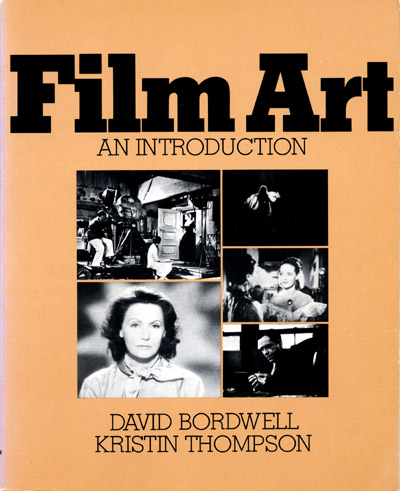
First edition, Addison-Wesley, 1979
Kristin here–
As our blog’s name suggests, we started it partly so we could write about subjects that would be of interest to lovers of cinema. It’s also a resource upon which teachers, students, and general readers using our textbook, Film Art: An Introduction, can draw. For that matter, many entries contain material that is pertinent to Film History: An Introduction as well. The entries are written in a more informal fashion than are the textbooks, but they often extend or elaborate points made in the books.
Now that universities here in the U.S. and in many other countries are beginning their autumn semesters, it seemed a good time for us to suggest some possibilities for using specific blog entries to cast light on topics in our text.
Second edition, Random House, 1986
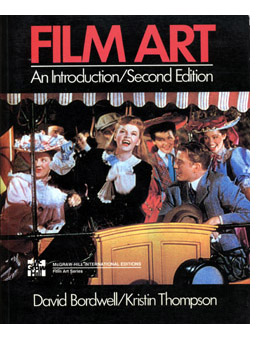 First, there are some general entries that might aid the teacher as courses begin. For those who show excerpts from DVDs in classes and are nervous about copyright issues, my piece, “Film educators no longer criminals” will be reassuring. It explains how last year fair-use exemptions covering just that situation were put into effect last year. Create that Powerpoint lecture or bring a DVD into class to analyze with impunity.
First, there are some general entries that might aid the teacher as courses begin. For those who show excerpts from DVDs in classes and are nervous about copyright issues, my piece, “Film educators no longer criminals” will be reassuring. It explains how last year fair-use exemptions covering just that situation were put into effect last year. Create that Powerpoint lecture or bring a DVD into class to analyze with impunity.
Teachers often confront the problem of overcoming students’ resistance to subtitled, black-and-white, and/or silent films. My entry “Subtitles 101” might be of some help in persuading them to be more open to viewing unfamiliar kinds of films. David’s “From Hollywood to Atlanta to us,” on the huge variety of films to be found on Turner Classic Movies, suggests the delights of having access to such a wide range of cinema history. (Also check out Jim Emerson’s recent “Gimme them old-time furrin pictures” on his Scanners blog.)
For students who don’t see a difference between watching films on an iPod and a cinema screen, David ruminates on some of the advantages and disadvantages of the tiny digital image in “Area man lives in fear that attractive woman will ask what’s on his iPod.” Similarly, for those who confidently expect to be able to find anything they need for viewing or researching term papers online, my “The Celestial Multiplex” might prove an eye-opener.
Third edition, McGraw-Hill, 1990
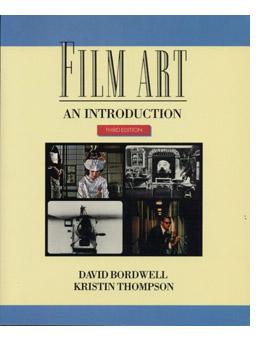 Chapter 1 begins by briefly introducing film as an art form. David’s entry, “But what kind of art?” could be used to fill out that section, though it is most appropriate for film majors and advanced classes.
Chapter 1 begins by briefly introducing film as an art form. David’s entry, “But what kind of art?” could be used to fill out that section, though it is most appropriate for film majors and advanced classes.
The chapter also differentiated between studio and independent filmmaking. David’s “Independent film: how different?” is relevant here. For a discussion of the auteur theory as contested by one prominent Hollywood writer, Joe Eszterhas, see David’s “Who the devil wrote it? (apologies to Peter Bogdanovich).”
These days news sources cover the weekend box-office figures and rank the highest grossing films. The raw figures don’t tell the whole story, though, since they don’t specify how many theaters each title is showing in or how big each film’s production budget was. A film playing in only a few theaters might be low on a list, but if it is making thousands of dollars more per theater, it might ultimately be more successful. A low-budget film doesn’t need to gross as much to become profitable as a costly epic does. My “What won the weekend, or, How to understand box-office figures” adds some nuances to the simple lists reporters give us each Monday.
Chapter 2 includes a section on “Formal Expectations.” One of the effects of creating expectations can be suspense. In “This is your brain on movies, maybe,” David explores why viewers enjoy watching films where they know the outcome, either through having seen the film before or because the story is based on real events—in this case United 93.
Chapter 3 is devoted to cinematic storytelling. A sample analysis of narrative organization can be found outside the blog, in David’s online essay on Mission: Impossible III. On our very first blog entry, back in September 2006, we quoted the director of One Hour Photo explaining how he rethought the film’s original plot structure so as to maximize curiosity. In the same chapter, we include “Openings, Closings, and Patterns of Development” as one of the principles of narrative construction. David’s blog entry “First shots” discusses some of the ways filmmakers have historically used first shots to plant narrative information, introduce motifs, establish tone, and, in recent decades, to lead off with a dense, virtuoso moment to be savored as such.
Fourth edition, McGraw-Hill, 1993
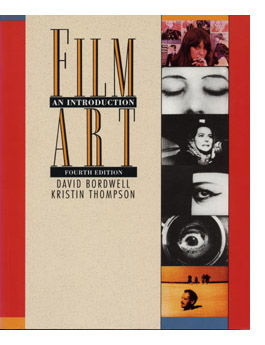 Recent years have seen sequels, prequels, series, and other forms of extended narratives being used more pervasively in Hollywood cinema. My “Originality and origin stories” discusses the phenomenon of the film that jumps back to an early stage in the life of a character in a previous film. David explores two other current trends, toward narratives involving networks of criss-crossing characters and those that play self-consciously with plot, in “An appetite for artifice.”
Recent years have seen sequels, prequels, series, and other forms of extended narratives being used more pervasively in Hollywood cinema. My “Originality and origin stories” discusses the phenomenon of the film that jumps back to an early stage in the life of a character in a previous film. David explores two other current trends, toward narratives involving networks of criss-crossing characters and those that play self-consciously with plot, in “An appetite for artifice.”
Does the increasing consumption of films on DVDs rather than in theaters change the way we watch and understand narratives? Does the remote control encourage us to manipulate what we’re seeing in ways unexpected by the filmmakers? David tackles that question in “New media and old storytelling.”
One of the most popular topics covered in Chapter 4, on Mise en scene, is acting. In “Good actors spell good acting,” I consider how a focus on an impressive performance can sometimes lead a critic to downplay other aspect of a films. An older tradition of ensemble performance in relation to camera position gets some analysis in “Watching movies very, very slowly.”
David’s fascination with modern styles of cinematography (Chapter 5) and editing (Chapter 6) is evident in several entries, most illustrated with many frame enlargements. In “Can they make ‘em like they used to? continued,” he deals with foreground objects and depth of focus. His essay on “Shot-consciousness” examines a specific type of framing that places the characters against a flat background and frontally facing the camera—a technique he terms “planimetric framing.”
In another entry on cinematography, “Funny framings,” David explores how the manner in which the camera frames its subject can create humor. This has been one of our most popular entries, as is evidenced by the number of people who wrote to David with their favorite examples. In “Walk the talk,” David discusses the specific sort of tracking shot that follows characters talking with each other.
Occasionally our blog gets caught up in a topic that has generated controversy among critics. One of these is the use of fast cutting and abnormally fast, out-of-focus camera movements in The Bourne Ultimatum. Nausea-inducing excess or deliberately disorienting style? In two entries, David argues that the hyperactive camera is largely unmotivated and distracting: “Unsteadicam chronicles” and “[insert your favorite Bourne pun here].”
One of our first entries to gain widespread attention was David’s discussion of story structure and editing in “The Departed: no departure.” He discussed the increasing rapidity of Scorsese’s cutting and linked it to a broader trend of intensified continuity in American cinema. That trend is explained further in “Intensified continuity revisited.” In the case of The Good German, a film that claimed to mimic classical Hollywood films of the 1940s and 1950s, David discussed the concept of “coverage” in traditional filming. See his “Cutting remarks on THE GOOD GERMAN, classical style, and the Police Tactical Unit.”
Fifth edition, McGraw-Hill, 1997
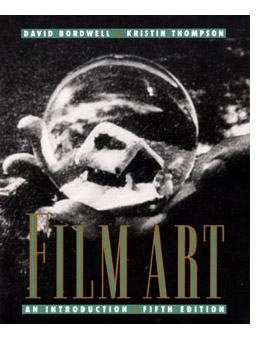 In teaching non-classical approaches to film editing, David’s “Another pebble in your shoe” might be useful. There David discusses how Lars von Trier used multiple cameras to film scenes and a computer to dictate seemingly random cutting in The Boss of It All.
In teaching non-classical approaches to film editing, David’s “Another pebble in your shoe” might be useful. There David discusses how Lars von Trier used multiple cameras to film scenes and a computer to dictate seemingly random cutting in The Boss of It All.
Chapter 6 includes a section on “Rhythmic Relations Between Shot A and Shot B.” There we discuss the number of frames in each shot as a measure of screen duration. David talks about counting frames in film vs. various video formats in “My name is David and I’m a frame-counter.”
In our extended analysis of continuity editing in the opening scene of The Maltese Falcon, we discuss the technique of shot/reverse shot—the basic editing pattern used in conversation scenes in classical films. “Angles and perceptions” discusses this technique and what happens when a scene holds on a shot of one speaker without cutting to the reverse shot. Late in “Walk the Talk,” there’s an analysis of how continuity editing can be coordinated with staging and framing.
When watching a film, we seldom perceive the sound tracks as a blend of many separate recordings. It comes across as a seamless sonic accompaniment to the images. David had the opportunity to sit in on a sound-mixing session for the new film 3:10 to Yuma, directed by James Mangold. He describes that experience in “Christian Bale picks up a rail.” (This could provide an additional example for the section of Chapter 7 entitled, “Selection, Alteration, and Combination,” pp. 268-272.)
In Chapter 8 of Film Art we use Citizen Kane as our summary instance of film style. Some blog entries that deal with style in specific films include: “TANGO marathon” (on Béla Tarr’s epic Sátántangó); “Not back to the future, but ahead to the past” (on Steven Soderbergh’s attempt to mimic 1940s Hollywood style in The Good German); and “Classical cinema lives! New evidence for old norms” (on computer-generated special effects and their narrative functions).
Sixth edition, McGraw-Hill, 2001
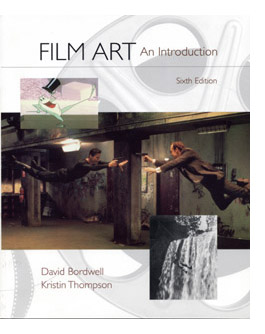 In Chapter 9, we deal with film genres. In “Swords vs. lightsabers,” I talk about the cyclical nature of genres, suggesting that science-fiction films are waning in popularity just as fantasy films are becoming popular.
In Chapter 9, we deal with film genres. In “Swords vs. lightsabers,” I talk about the cyclical nature of genres, suggesting that science-fiction films are waning in popularity just as fantasy films are becoming popular.
Chapter 10 examines documentary, experimental, and animated films. Pixar is currently at the forefront of Hollywood animation. I’ve written on Cars in “Reflections on cars,” and David and I have a dialogue on Ratatouille in “Rat rapture.” In “By Annie standards,” I discuss why recent animated films are often better than live-action ones. David offers an appreciation of Disney’s classic features in “Uncle Walt the artist.”
We dicuss experimental filmmakers in “Lewis Klahr, X 3, X 4” (David), “3 notions about CREMASTER 2” (David on Matthew Barney’s cycle of films), and “Len Lye, renaissance Kiwi” (me on New Zealand’s great creator of experimental animation).
Chapter 11 ends with a section on “Writing a Critical Analysis of a Film.” David’s entry, “Watching movies very, very slowly,” gives a vivid demonstration of how we go about the research that goes into a detailed film analysis.
Some of our blog entries could be read in relation to more than one chapter. David’s “Charlie, meet Kentaro,” on the Charlie Chan and Mr. Moto B-film series, deals with film history, style, and ideology.
Seventh edition, McGraw-Hill, 2004
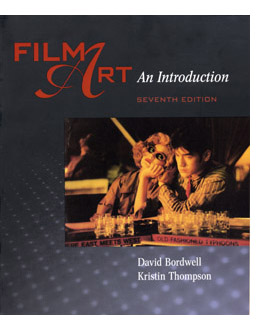 For musings on the relationship of early cinema to Victorian painting, see David’s “Professor sees more parallels between things, other things.”
For musings on the relationship of early cinema to Victorian painting, see David’s “Professor sees more parallels between things, other things.”
David’s book, Ozu and the Poetics of Cinema, is now available online. For details, see his “I wrote a book, but …; or, what did the professor forget?”
Some teachers dealing with the classical Hollywood cinema of the 1930s to 1950s may wish to cover the B movie. Grad students and alumni of the University of Wisconsin film-studies program contribute to a dialogue on the subject in “Bs in their bonnets: A three-day conversation well worth the reading.”
We deal with the important institution of film festivals. I review a book on one of the most important of these festivals in “Cannes: Beyond the art, hype, and politics.”
When the second edition of Film History came out, two of the auteurs whose careers we examine in Chapter 19 were still alive. Now Ingmar Bergman and Michelangelo Antonioni have both died, and on the same day. David’s “Bergman, Antonioni, and the stubborn style” could make a coda for our chapter sections on those directors.
For updated information on Asian cinema, check the tags on the right. For recent Danish cinema, see David’s, “My Danish December.”
At intervals we report from film festivals we attend. So far such reports have come from the 2006 Vancouver Film Festival, the 2007 Hong Kong Film Festival, Roger Ebert’s Overlooked Film Festival (aka “Ebertfest,” 2007), and Il Cinema Ritrovato (“Rediscovered cinema,” in Bologna, Italy, 2007). These reports deal with the people we meet there, the films we see, and the institutions that run the festivals. We’ll continue to write such dispatches during our travels. Most of these reports have multiple parts, so be sure to follow the links.
As I said at the outset, our blog can serve as a supplement to our textbooks. We usually don’t, however, write new entries with that in mind. As we see recent films, revisit old ones, read books, and see information posted on the internet, we find inspiration to engage with the cinema in fresh ways. We find ourselves making contact with people we had never met and reconnecting with colleagues we have not heard from in decades. We hope that we are learning as we go along and passing along some of that learning to readers of Film Art and Film History.
Note: Elsewhere on this website there is a section on Film Art. Here you can find a list of corrections for errata in the 8th edition. We also include all of the sample analyses that have been cut from various editions: The Man Who Knew Too Much, Stagecoach, Hannah and Her Sisters, Desperately Seeking Susan, Day of Wrath, Last Year at Marienbad, Innocence Unprotected, Clock Clearners, Tout va bien, High School.
[November 15, 2009: See also the 2008 and 2009 updates on more recent blog entries.]
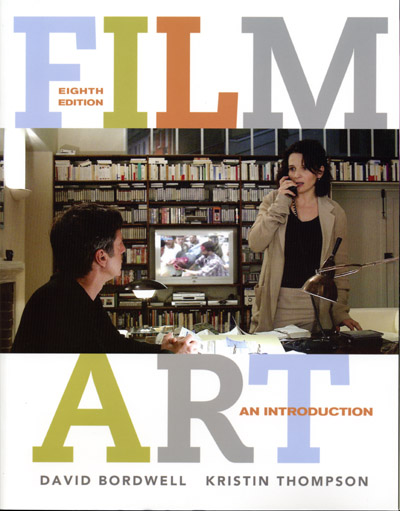
Eighth edition, McGraw-Hill, 2008













